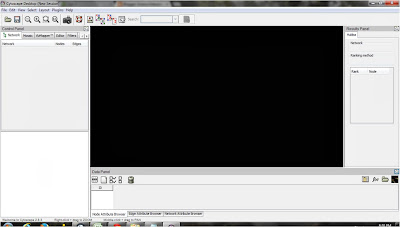The work I discuss can be found on today's NATURE at Collaboration: Strength in diversity. The piece is a prelude to as-of-yet unpublished work by Richard Freeman and Wei Huang who are economics researchers from Harvard University and are in the process of publishing their mentioned work in the Journal of Labor Economics.
Here, the authors hypothesize that scientific collaborating groups of high ethnic diversity are more likely to result in high-impact scientific publications. In their work, they data-mined over 2.5 million research articles stretching across 11 scientific fields dating from 1985 - 2008 where all authors had US addresses. Using surnames to derive author ethnicity and journal impact factor or citation count as a measure of scientific impact of the article, the authors looked for trends between impact factor/citation count and article ethnic diversity. They attempted to control for group size and ethnic population densities, although it is yet unclear the exact methods. Their key findings were:
- Authors of a given ethnicity were more likely to co-author with others of the same ethnicity than expected by chance (this phenomenon they refer to as homophily).
- Groups of increased ethnic diversity tended to publish higher-impact papers as compared to those with lower diversity.
- Group of increased ethnic diversity also tended to publish papers of slightly higher citation count as compared to those with lower diversity.
Strengths of study:
Study motivation:
The overarching motivation for this study is understand what makes a successful scientific group. This is comparable for many to understanding what makes a successful athletic team, business, etc. This in-itself is a worthwhile goal.
Strength in numbers:
The studies uses data from 2.5 million publications spanning over two decades across multiple disciplines. This is definitely a big data project where significant results are most likely reliable.
Implications of the workplace:
This work also supports ethnic diversity in the work-place. If the key findings are correct and can be extrapolated outside of science, then ethnic diversity should positively correlate with work-place productivity and group success.
However, this would be heavily dependent on the precise definition of success and whether all or most group members have the same definition. In science, there is a saying: "Publish or perish". Meaning, either publish or you risk losing your funding. Most would agree that the higher the impact of the publications, the lower the chance of losing it. Here, it would seem plausible that most scientists see publication as one measure of success.
Drawbacks of study:
As this is a descriptive study with a dearth of reliable mechanistic explanations, I would not put "all my eggs in one basket" here.
Definitions:
Using surnames to predict ethnicities can be quite misleading, especially in the US (land of the immigrants). It does seem reasonable that the majority of surname-ethnicity predictions can be right, but there should still be a significant amount of incorrect predictions due to mixed ethnicity, marriage surnames, adoptive surnames, etc. In addition, there are a multitude of covariates that would be incredibly difficult to tease out in a large data-set as this. For example: family history, education history, experience in the discipline, study topic within each desipline, etc. It would be very interesting if a principle component analysis (PCA) would reveal ethnic diversity has a driving factor even in light of all other possible factors accounted for.
Weight distribution within the author social network:
It appears that each author on a paper is treated with equivalent weights. If this is truly the case, this might also obfuscate the study findings. Collaborations are driven largely by the corresponding authors (ie. the project supervisors). Therefore, it might be the case that papers with 1 corresponding author might be more likely to contain low diversity groups (basically restricted to their local lab group). However, papers with multiple corresponding authors would have contributions across multiple labs, possibly across institutes. An important (largely unspoken) criteria in selection of publications by journals is diversity of corresponding authors. If you are to publish with 1 or more renown experts within the field, you would be more likely to have a higher impact paper. In this paradigm, publication success might be driven predominately by who the corresponding authors are.
Overall:
I think this work is interesting in its own right, however it leaves the door open for many questions. But then again, that is the nature of research.



